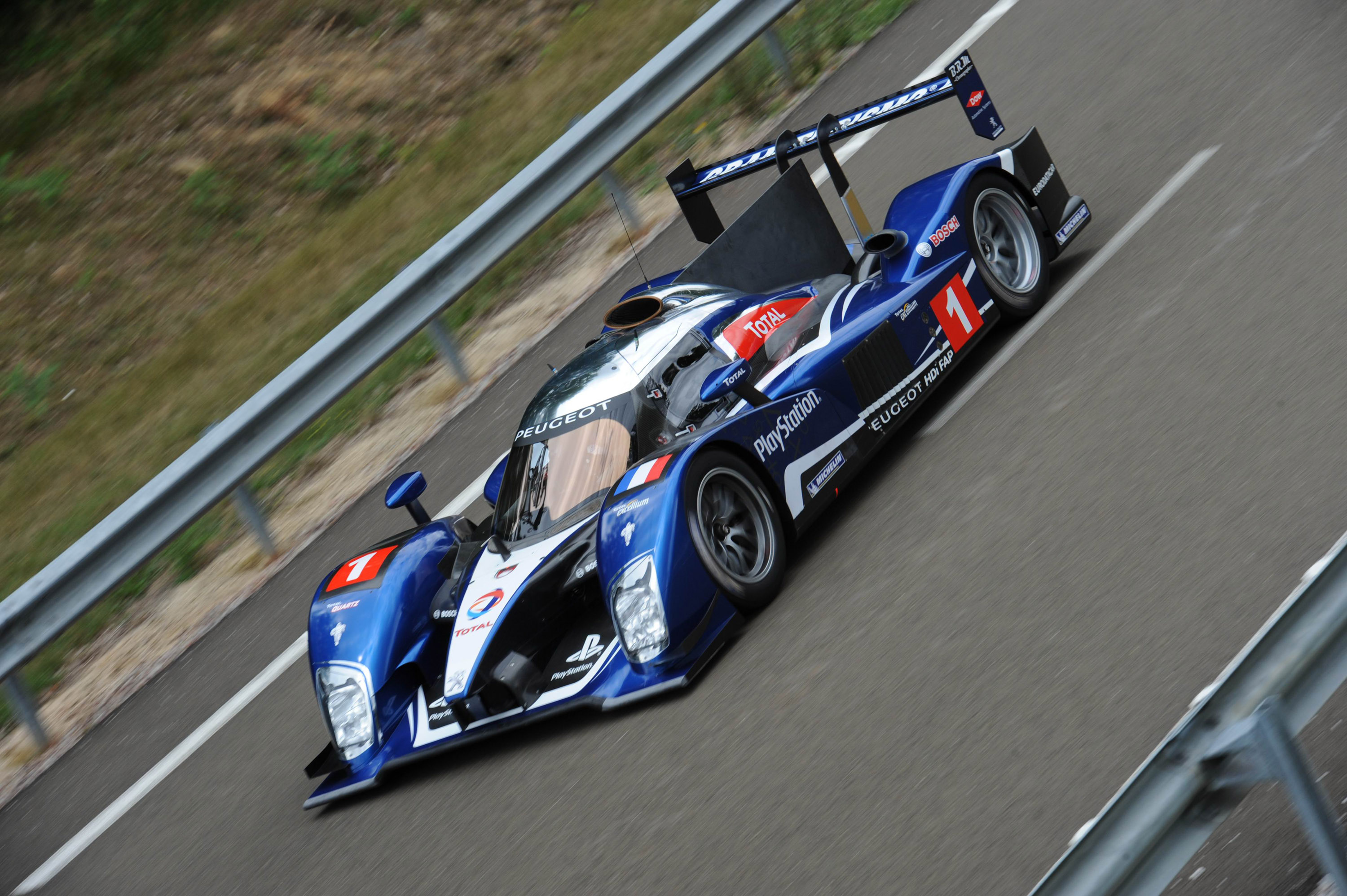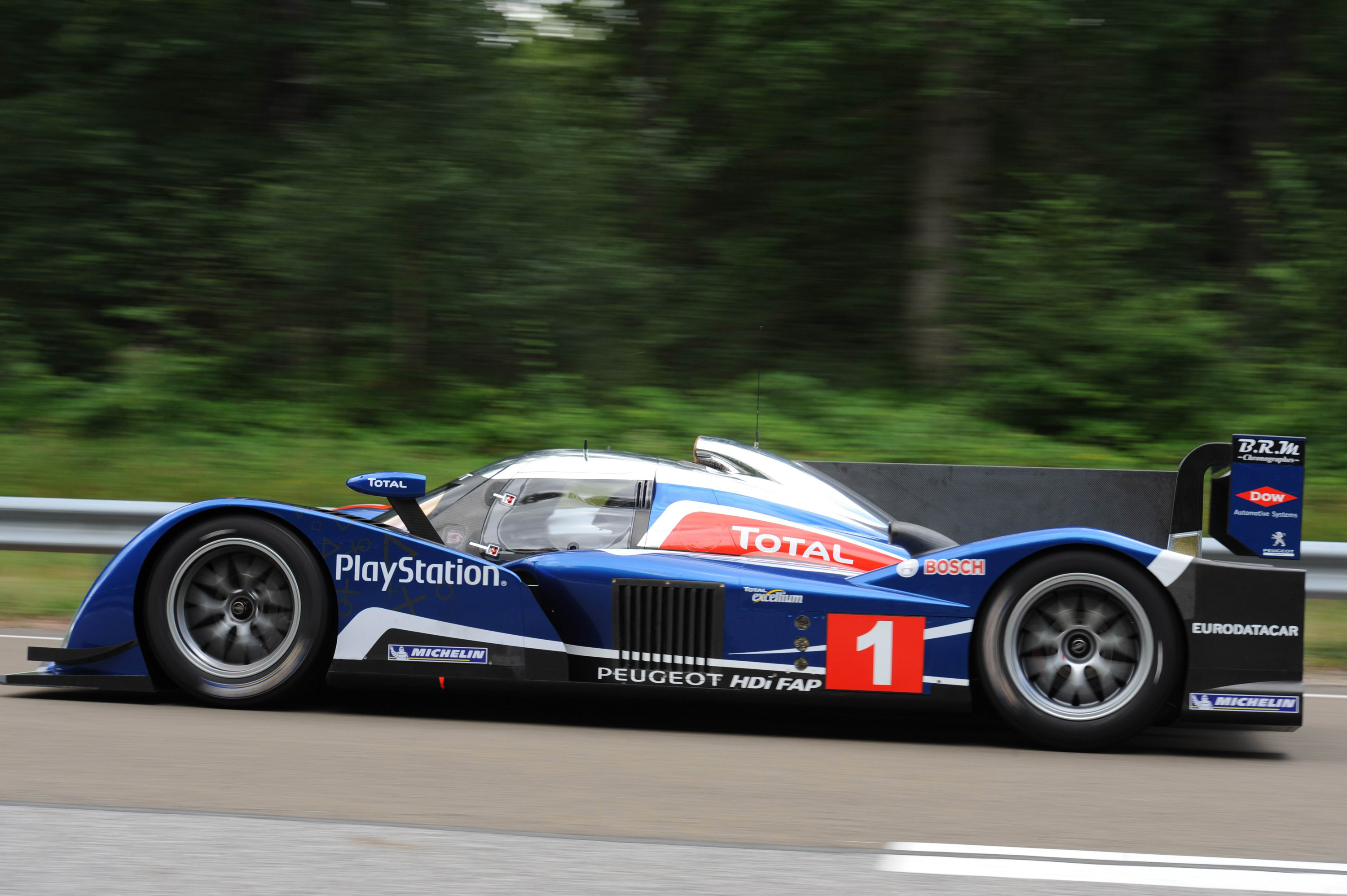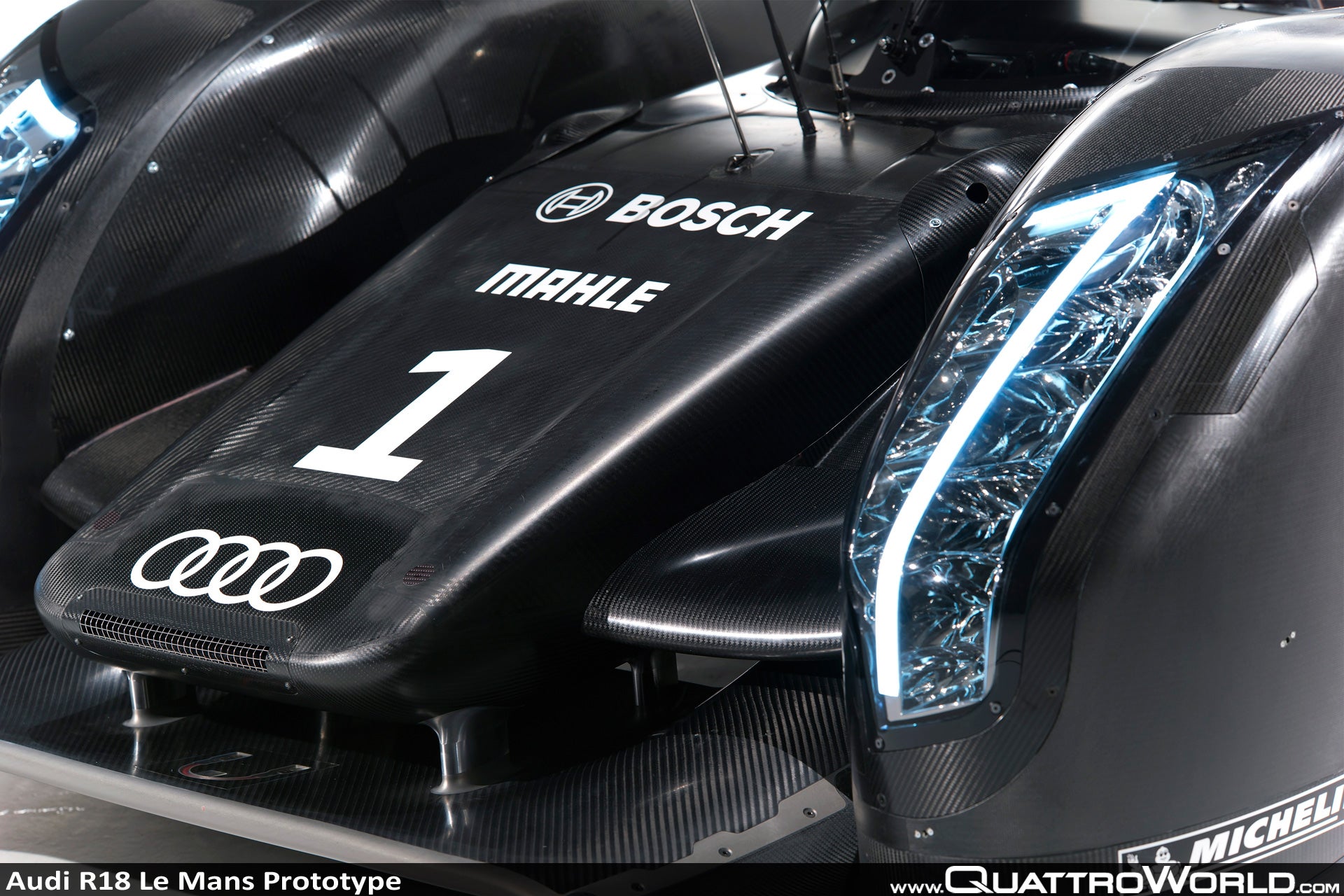2011 ACO Technical Regulations for LMP1 and LMP2 classes can be found here:
http://www.lemans.org/wpphpFichiers/1/1 ... ns-lmp.pdf
Start at section 1.13 for details of ACO's KERS (STSY - Système rechargeable de stockage d'énergie).
1.13 - Energy Recovery System (LMP1 only):
The ACO wants to give to the manufacturers the greatest possible
freedom to develop and use such systems while taking a certain
number of measures to control them.
Energy recovery systems are free, provided they respect the
following rules:
− Recovery and release of energy from the brakes, either on
the 2 wheels of the front axle, or on the 2 wheels of the
rear axle.
− Recovery from the heat of the exhaust fumes.
− Regarding energy recovery from the brakes, only electric
systems and mechanical or electromechanical flywheel
system are allowed.
− The car’s minimum weight is identical to that of the other
LM P1s using conventional power trains: 900 kg.
− The maximum amount of fuel allowed on board is:
o petrol: 73 l.
o diesel: 63 l.
− The combustion engine and the electric motor must be
controlled by the driver using the accelerator pedal (push
to pass buttons forbidden). =D> =D> =D>
− The amount of energy used between 2 braking must not
exceed 0.5 MJ. Braking lasting under 1 second will not be
taken into account.
− The current, voltage and the time of charge and discharge
will be measured continuously between the energy
storage system and the inverter(s).
− Equivalent sensors will be defined for the inertial systems.
− Sensors for monitoring the use of the brakes and the
wheel speed will equip the car.
− Safety rules that will be imposed by the ACO
The use of such a system must not be aimed at obtaining additional
power but at reducing fuel consumption.
The ACO may adjust the performance of any car using such a
system, should it enable the vehicle to improve its lap times in a
significant manner.
Competitors who want to develop and use such a system must
inform the ACO beforehand and provide all relevant information as
to how it works, its use, the performance expected, the safety
systems installed etc.
The ACO must be kept informed throughout the development of the
system and the car. It may demand additional information and carry
out any checks it deems necessary.
To be considered as hybrid, a LMP1 must be able to move all along
the pit lane (minimum 400 m) at 60 kph using only the electric motor.
To be considered as hybrid, an LMP1 car must be able to move
along the whole length of the pit lane (minimum 400 m) at 60 kph
using only the electric motor or the flywheel system.
The test must be carried out for the homologation of the car in the
pit lane of the “24 Heures du Mans” circuit. During the test, theenergy used will be measured and after the test, the weight of each
element of the energy recovery system will be checked and
indicated on the homologation form of the car. These elements
must equip the car permanently and must be at the weight
indicated on the homologation form. A new test must be carried out
for any weight modification of these elements.
1.14 - Rechargeable Energy Storage System (STSY)
A Rechargeable Energy Storage System (STSY), such as a flywheel
system, super-capacitors, ultra-capacitor, batteries, etc., is a system
that is designed to recover kinetic energy from the car during
deceleration or braking, store that energy and make it available to
propel the car.
During the practices or the race, the SRSE cannot be recharged
from any fuel-based energy converter or, for plug-in hybrids, directly
from the grid. When the car is on the starting grid the SRSE must be
switched off in "Safe" status with all the red lights - signaling "Live"
status - out.
1.14.1 - Flywheel system
A flywheel system is a mechanical or electromechanical system
capable of storing and releasing energy by means of a rotating mass
system, such as the rotor of an electric motor/generator.
1.14.2 - Capacitors
A capacitor (electrolytic capacitor, Electric Double Layer Capacitor
(EDLC) named “Super Capacitor” or “Ultra Capacitor”) is a device to
store electric energy in the electric field or, in the case of the EDLC,
a system in which an electric charge is stored, permitting adsorption
and desorption of the ions in an electrolyte to electrodes.
1.14.3 - Traction battery
The traction battery is a SRSE which supplies electric energy to the
power circuit and thus to the traction motor(s).The traction battery is
defined as any equipment used for the intermediate storage of
electrical energy supplied by the conversion of kinetic energy.
Any on-board battery electrically connected to the power circuit is
considered as an integral part of the vehicle's traction battery.
1.14.3.1 - Battery pack
A battery pack is a single mechanical assembly optionally housed by
a battery compartment, comprising battery modules, retaining
frames or trays, fuses and contactors as well as battery supervising
electronics.
1.14.3.2 - Battery module
A battery module is a single unit containing one cell or a set of cells
electrically connected and mechanically assembled.
1.14.3.3 - Battery cell
A cell is an electrochemical energy storage device of which the
nominal voltage is the electrochemical couple nominal voltage, made
of positive and negative electrodes, and an electrolyte.
1.14.3.4 - Battery supervising electronics
The battery supervising electronics is part of the battery pack and an
important safety system. It comprises a monitoring and chargebalancing
circuit to keep all cells, at any time and under any charge
or discharge conditions, within the specified voltage range given by
the battery manufacturer.
1.15 - Power circuit
The Power Circuit (power electronics, power converter) consists of all those parts of the electrical equipment which are used to power
the vehicle.
By extension for inertial SRSE, in the present regulation, the
expression "Power Circuit" addresses all the mechanical elements
homologues of the here above components (SRSE, belt or
transmission shaft carrying SRSE energy,..).
1.16 - Power bus
The power bus is the electric circuit used for energy distribution
between the generator, the STSY (e.g. traction battery) and the
propulsion system which consists of the power electronics and the
drive motor(s).
1.17 - Over current trip (fuses)
An over current trip is a device which automatically interrupts the
electrical current in the circuit in which it is installed if the level of this
current exceeds a defined limit value for a specific period of time.
1.18 - General Circuit Breaker (“Emergency stop switch")
The General Circuit Breaker is a contactor, i.e. a switch with physical
contacts and NOT a semi-conductor device:
- to cut off all electrical energy transmission of the power circuit
(STSY to the loads such as the power electronics and the electric
motor),
- to cut off all electrical transmission of the auxiliary circuit (auxiliary
battery and possibly the alternator to the loads such as lights,
hooters, ignition, electrical controls, etc.) and
- to stop the engine. For Diesel engines having no electronically
controlled injectors, the General Circuit Breaker must be coupled
with a device cutting off the air intake into the engine.
The General Circuit Breaker is activated by at least one trigger
switch from inside or outside the vehicle.
The General Circuit Breaker must not be used as the Driver Master
Switch.
1.19 - Power Circuit Ground
Power Circuit Ground is the ground potential of the electrical Power
Circuit. It is forbidden to connect, to chassis ground, the Power
Circuit Ground nor any Power Circuit potential.
1.20 - Chassis Ground, Vehicle Ground and Earth Potential
Chassis (Vehicle and Bodywork) Ground, hereinafter named
“Chassis Ground”, is the electrical reference potential (earth
potential) of all conductive parts of the bodywork including the
chassis and the safety structure. Auxiliary ground must be
connected to chassis ground. The conductive cases of the STSY
and of Power Circuit units such as motor(s) and contactors should
have robust connections to Chassis Ground.
1.21 - Auxiliary battery
The auxiliary battery supplies energy to the Auxiliary Circuit
(network).
1.22 - Auxiliary Circuit
The Auxiliary Circuit (network) consists of all those parts of the
electrical equipment used to operate the i.c. engine, for signaling,
lighting or communication.
1.23 - Auxiliary Ground
Auxiliary Ground is the ground potential of the Auxiliary Circuit.
Auxiliary Ground should have a robust connection to Chassis
Ground.
1.24 - Driver Master Switch
The Driver Master Switch (DMS) is a device to energise or
deenergise the Power Circuit under normal operating conditions
• with the exception of all electrical equipment needed to run the i.c.
engine and
• with the exception of the systems needed
- to monitor the isolation resistance between Chassis Ground and Power Circuit and
- to monitor the maximum DC as well as AC voltage between
Chassis Ground and Auxiliary Circuit supply voltage.
1.25 - Safe / Live Signage
The Safe / Live Signage is a safety device to clearly show the “Live”
or “Safe” condition of the Power Circuit.
“Live” means that the Power Circuit is energised and “Safe” means
that the Power Circuit is off.
1.26 - Detonator
A detonator is a pyrotechnical device fired by an electric current and
used to cut power connections.
New electrical system safety regulations are detailed in sections 8.4 & 15.7.
The shark fin is detailed in section 3.6.4.
Is it just me or does the ACO come off as a much more professional and capable regulatory body than the FIA? This is such a vastly superior introduction of a KERS framework, I'm almost speechless.







